Cacao can be more than a chocolate bar, even more than a superfood. This ancient plant medicine can change the way you experience yourself and your surroundings.
by Carmen von Luckwald Images by Ramona August
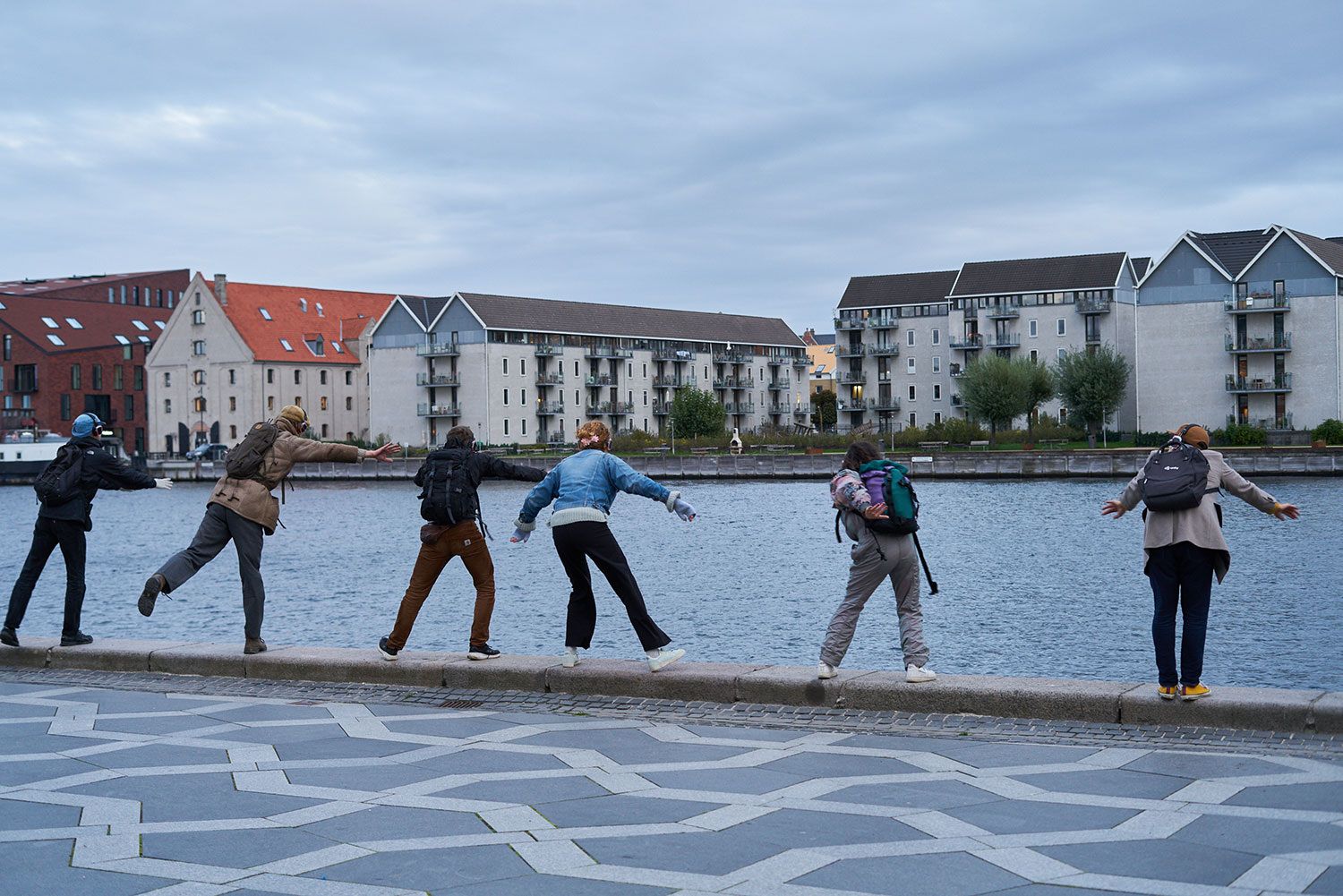
Autumn winds are blowing into your face
while you are walking and exploring
the city
no one speaks
we all listen
to a shared soundtrack
and our own inner questions and wonder about life
The city is generous
and showing and answering with stories
and experiences
the answers might be clear or blurry
but your heart will know
as we travel with Cacao that lets us listen to our heart
and makes the heart beat stronger
and the feet travel faster
through the alleys, corners and canals of Copenhagen
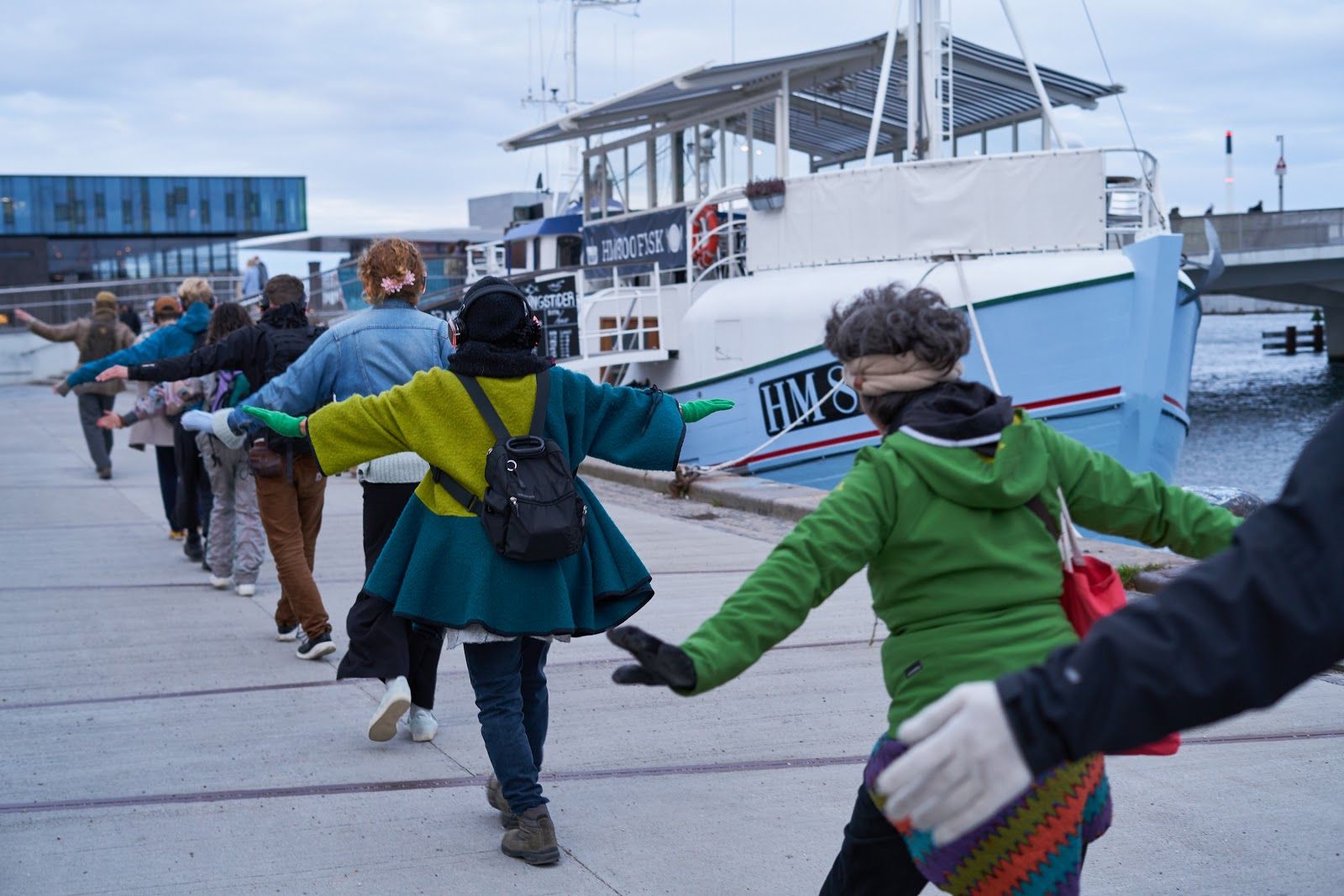
Imagine yourself together with a group of friends and strangers in the city. You have cleared the afternoon for a Cacao Drift and are walking to the meeting spot. Something in you is tingling. Maybe you are a bit nervous. Maybe you are curious. When you arrive, you meet a group of people wearing headphones, waiting for the Drift to begin.
A Drift is a playful exploration through a city where a group of people take turns leading one another through an urban landscape without speaking and while listening to a shared soundtrack – the music sets the tone and helps participants to submerge themselves in the experience. There is no pre-chosen route to walk or destination to reach; participants are free to explore and lead each other where they feel drawn to, in order to experience the city and themselves in a new way.
The concept of a drift was developed by the game designers and artists Thom Kiraly, Mikael Vesavuori and Niklas Persson for the w00t Copenhagen Play Festival 2014. The current most active community around drifting is Berlin-based club, the Drift Club.
After just a brief introduction, you find yourself also wearing headphones and, most distinctively, holding a cup of cacao. This cup is what differs from a normal drift – this is how it starts. The drink inside is a deep, dark brown. It’s warm, thick, and topped with a little foam. It smells and tastes intensely like cacao, with a hint of cinnamon and vanilla. It’s a bit bitter and slightly spicy.
It is a special kind of cacao preparation, ‘ceremonial cacao’.
How is ceremonial cacao different?

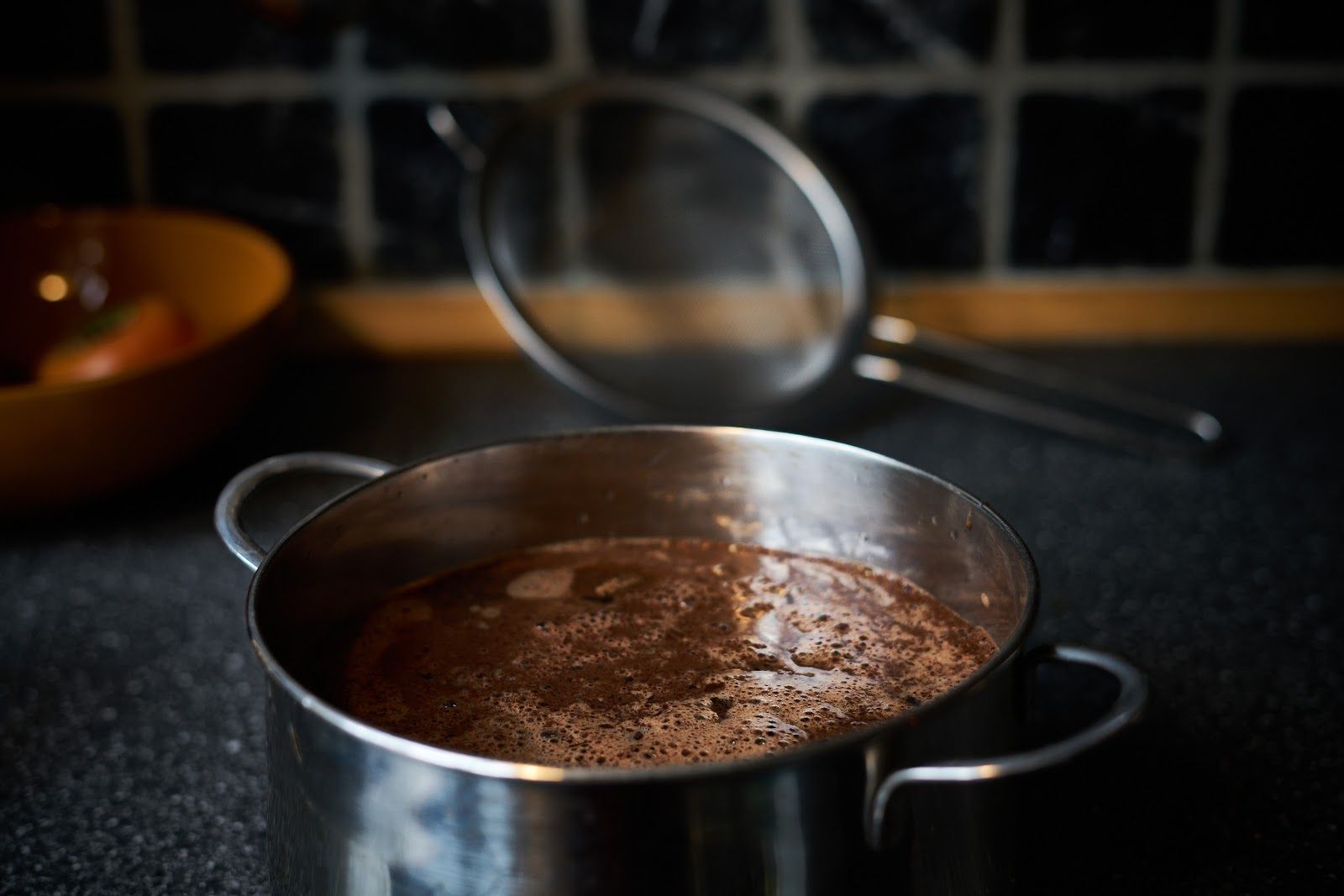
Ceremonial cacao is raw and unprocessed. Conventional cacao processing generally involves heating the beans and resultant chocolate above 100 degrees.
Ceremonial cacao isn’t heated beyond 42 degrees celsius, to retain its raw quality. The cacao beans are not roasted, but fermented and dried in the sun and then peeled and ground into a thick paste.
Different from standard chocolate drinks, ceremonial cacao is not prepared with milk and sugar, but with warm water. Spices such as vanilla, cinnamon, cardamom, cayenne pepper, and chilli are added to enrich and complement the cacao, and coconut flower sugar serves to sweeten it.
As a lot of the original components of cacao are highly heat-sensitive, this way of preparing cacao maintains its natural nutritive value and spiritual potential.
What effect does this cacao have?
Cacao works on many levels: physically, emotionally, and spiritually. On a physical level, due to the high concentration of magnesium and theobromine, it activates the cardiovascular system, increasing the blood circulation. This gives the physical experience of feeling our heartbeat stronger.
Cacao also activates the emotional body in the heart area. It contains abundant natural antioxidants as well as different hormones and neurotransmitters that enable us to enter a state of loving compassion, relaxation, and increased awareness. Cacao is called a medicine for the heart, as it helps us to feel, and opens our hearts. We can enter into a state of compassion and love while being uplifted and activated.
“When I drank the cacao I felt really lucid. Energized. Drifting around with people was perfect to spend this energy. I don’t think I could have kept sitting down much longer to be honest!”
-Nuno Neves, participant
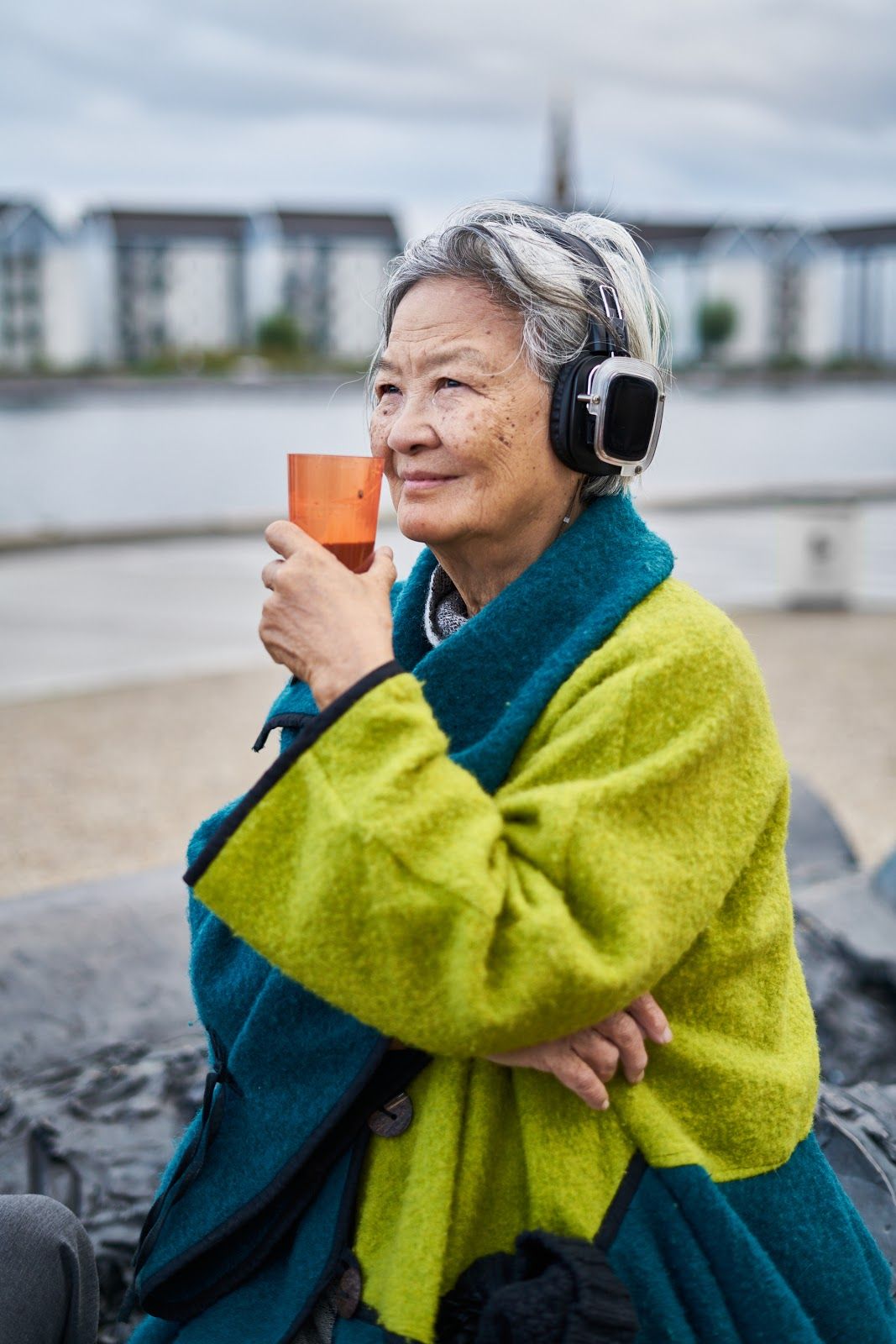
“What surprised me about myself was that the cacao easily put me into a relaxed frame of mind. My relation with myself was deepened during the drift.”
- Lian Henriksen, participant
The genus name of cacao, theobroma, literally translates to “food” (theo) “of gods” (broma) shows its original spiritual use. In the times of Aztecs and Mayans, cacao was used in ceremony. In those times, it was considered one of the most valuable goods, with cacao beans used as a currency. Drinking chocolate was one of the privileges of high-status individuals as it was considered as food of the gods. The priests would prepare the cacao as a drink for ceremonies and offer cacao seeds to the gods.
In recent years, cacao ceremonies have been gaining popularity – much in the same way yoga and reiki started as a niche practice before being gradually adopted by more widely. In cities all over the world, people gather around this ancient plant and celebrate the healing and love that comes from ceremonies. Through drinking cacao in a ceremonial way we can get in touch with a deeper understanding of ourselves and help us connect to our heart and intuition.
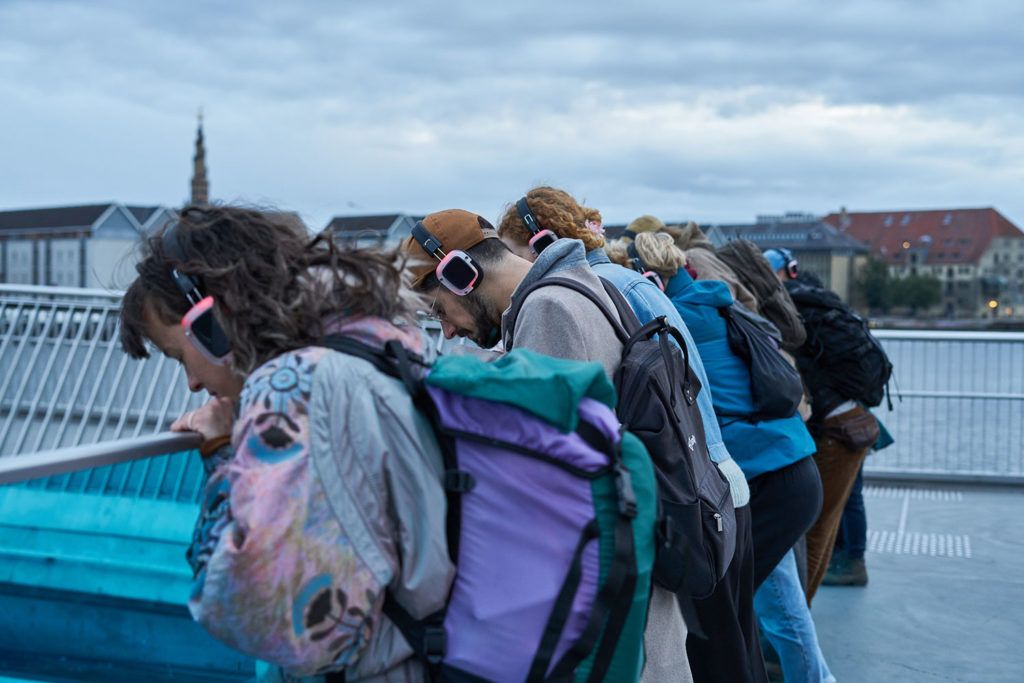
“Cacao, for me, is like a companion that guides me to the inner places I need to look. It gives a microphone to the otherwise subtle voice of my intuition.”
- Alexandra Hasdorf, participant
The Drift is an exploration and discovery of the city and with cacao, as well a ceremony that helps us to come back into connection with the place we live in and ourselves. Cacao helps us so that we can open ourselves lovingly and listen, discover, rediscover, and see with new eyes what we seemingly already knew. Cacao helps us to bring together the inside and outside of ourselves.
“It was very special for me to connect with the city and the other participants in such a deep way. I can sense how I still feel very connected to the other Drifters. At the same time I have also built up a strong connection to the part of the city we moved through. My mind is filled with vivid pictures of the places we’ve been at and played together.
I can see the huge potential this work has, to reunite people and places. In times with great loneliness in the cities, where people move apartment every few years, I believe the cacao drift can give us a sense of belonging back, which we are deeply missing.”
- Andreas Wolf, participant
One evening, eleven strangers shared walks, jumps, laughter, courage, and dances with cacao guiding them into discovering new angles of the city and exploring themselves. Many left with big smiles, some with profound answers, new questions, a web of new connections, and a curiosity about cacao – what else can cacao gift us in the times we live in?


